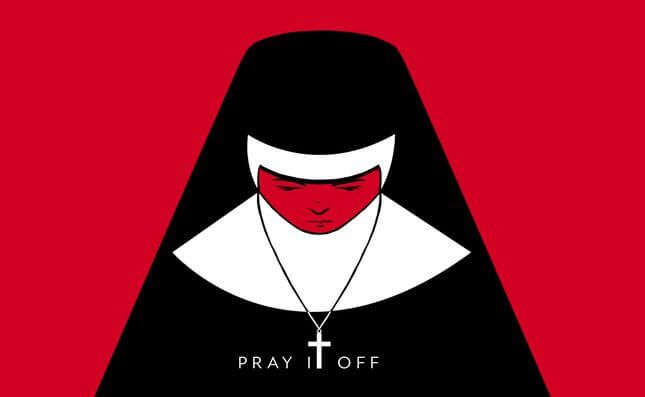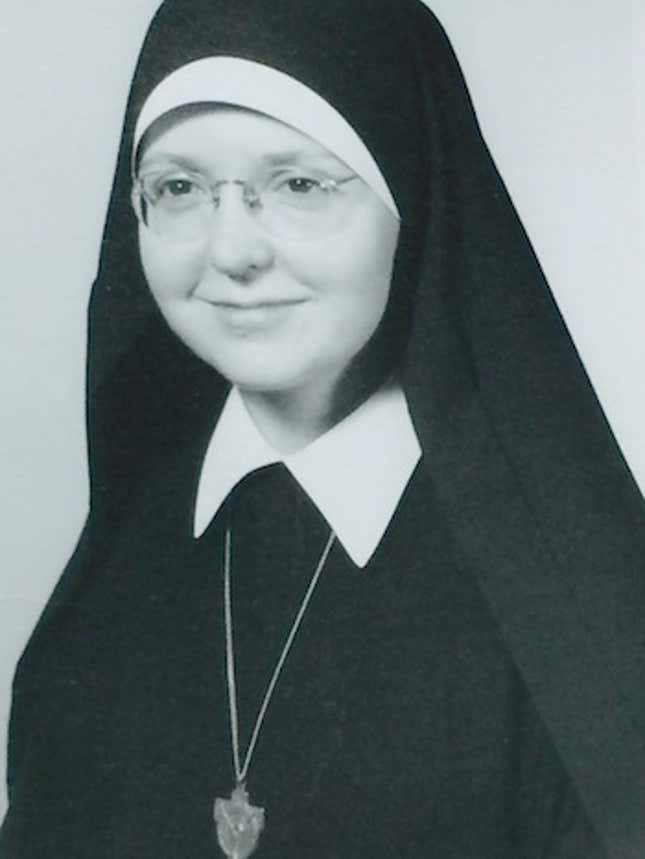Nun Abuse: How My Mother, a Former Nun, Suffered at the Hands of 'The Good Sisters'
Latest

Catholic priests have become synonymous with “abuse” in recent years, but they’ve never been the only people of the cloth guilty of inflicting physical and emotional pain on innocent victims. Seldom talked about are the rarely maligned women of the Church: sisters who intentionally abused fellow nuns behind convent walls. Nun abuse is that other dirty little secret of the Catholic Church—and it’s a secret that affected, and crushed, the spirits of scores of young women. My mother was one of them.
My mother entered the convent in the fall of 1957 at the age of 21, determined to save the world through her faith. She left nearly a decade later, beaten down physically and mentally, emaciated and fragile. On the early morning in which she finally exited, her head was bald in patches, owing to the hatchet-job-style haircuts the convent had subjected her to for years. She had no civilian clothes to wear—having given all of her worldly possessions up upon entering the convent—and so was forced by a pair of presiding nuns to wear ill-fitting clothing that she said smelled and a pair of mismatched shoes. She shook uncontrollably. Worst of all were her eyes. Her large brown eyes, wide and excited when she’d entered the convent, went listless and flat. In the words of my uncle, my mother’s youngest brother, who was horrified at the sight of her the morning she returned to their childhood home, “She looked like a mangy dog. A beat-up, mangy dog.”
“It was those nuns,” my uncle said, growing angry. “They were supposed to protect her, but they did just the opposite.”
Nun abuse remains little talked about in the church. There are a few studies that have been conducted, including one in 1996 that reported that as many as 40 percent of Catholic nuns in the United States (or around 34,000 sisters at that time) claimed to have been sexually abused in some capacity and that “all nuns who claimed repeated sexual exploitation reported that they were pressured by religious superiors for sexual favors.”

But most cases of the variety of nun abuse my mother was subjected to—emotional pain and physical tolls intentionally inflected upon nuns by nuns in positions of power—have gone unreported. In cases like my mother’s, the tales of abuse were passed along in hushed whispers, first in psychiatrists’ offices, then, later, to family members. In many instances, sisters suffered in silence, resigned to their fate, afraid to come forward. Nuns take vows of obedience. Historically, there were few, if any, means of reporting wrongdoing without breaking strict and rather ancient rules of church hierarchy. Consequently, there’s been little to no accountability. Young sisters, in particular, have been particularly vulnerable, as they’ve always been the lowest on the totem pole and expected to be the most obedient.
In my mother’s case, the stories of abuse came out in bits and pieces over the decades, mostly in the wake of two nervous breakdowns. Her hesitation to come forward was twofold. First, she, like so many victims of abuse—within or without the Church—felt as if it was her fault and that no one would believe her. Who, she wondered, would believe that “good sisters” could be so mean? Second, she worried that speaking up meant going against the Church she continued to love and believe in, even after she left the convent.
My mother had gone to live at a convent in Indiana just three months after graduating from college. She’d graduated with honors, and with an impressive resume. As a teenager, she’d met privately with President Harry S. Truman in the White House’s Rose Garden after being recognized for her work in student government. But it was a life of prayer—not politics—that most appealed to her. And so she sought out the “good sisters” of her convent. Her goal was to use her degree to educate and feed the poor.
When men become priests, they get to keep their names, cars, even bank accounts. Not nuns. When my mother entered the convent, she gave up virtually everything. And by everything, I mean everything. When my mother became a sister, she surrendered all of her belongings as part of her vow of poverty. That meant that her poodle skirts and saddle shoes, even the stories and plays she’d written in high school, were destroyed. She also lost her name. She entered the convent as Anne Virginia Diener and was promptly renamed Sister Aurelia Mary. She had no say in its selection; it was decided upon by presiding nuns.
Visits home for a young nun were forbidden. Visits from family members were closely supervised. Incoming mail was censored, often seized. Letters from my her old college boyfriend? None of them ever reached my mother. They were intercepted by the presiding Mother Superior, as were packages from doting grandparents deemed “too excessive.”
-

-

-

-

-

-

-

-

-

-

-

-

-

-

-

-

-

-

-

-

-

-

-

-

-

-

-

-

-

-

-

-

-

-

-

-

-

-

-

-









































